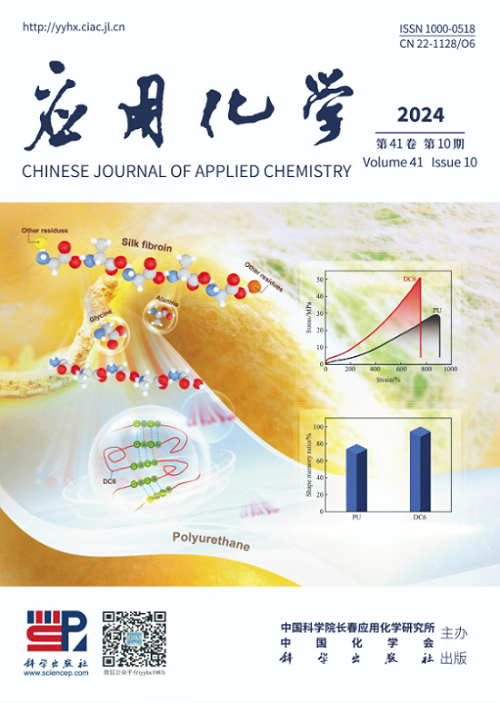求助PDF
{"title":"开发新的立体化学抗菌策略以推进生物安全材料","authors":"Xie Zi-Xu, Zhang Peng-fei, W. Xing","doi":"10.19894/j.issn.1000-0518.210070","DOIUrl":null,"url":null,"abstract":"The outbreak of Corona Virus (COVID-19) and its periodic changes of its epidemic pose a serious threat to human health, which has brought the biosafety problem back to the public view and has attracted the worldwide attention. Governments all over the world have begun to strengthen biosafety measures, and there is an urgent need for effective materials to deal with biosafety threats. Antimicrobial material is an important component of biosafety materials, and is committed to solve the thorny biosafety problem of microbial infections. Traditional antimicrobial strategies include sterilization, antimicrobial adhesion and antimicrobial composite. The traditional strategy is mainly based on sterilization, which takes effect quickly. However, the antimicrobial agents used in materials are easy to lose, thus making poor biocompatibility. What′s worse, it may lead to microbial resistance issue. Therefore, the development of new antimicrobial strategies is of great significance. The stereochemical strategy is based on the reversible recognition of the microbes on a material surface, allowing the microbes to autonomously leave the surface when they distinguish the stereochemical signals of the materials. This strategy, in line with the development trend, can effectively inhibit the adhesion, propagation and spread of various microorganisms. This review briefly summarizes the research progress of antibacterial materials in the past five years, and the current researches of stereochemical antimicrobial strategies. The new concept for a management and control of microbial behavior is further discussed. © 2021, Science in China Press. All rights reserved.","PeriodicalId":9936,"journal":{"name":"应用化学","volume":"38 1","pages":"510-523"},"PeriodicalIF":0.0000,"publicationDate":"2021-05-01","publicationTypes":"Journal Article","fieldsOfStudy":null,"isOpenAccess":false,"openAccessPdf":"","citationCount":"0","resultStr":"{\"title\":\"Developing new stereochemistry antimicrobial strategy to advance biosafety materials\",\"authors\":\"Xie Zi-Xu, Zhang Peng-fei, W. Xing\",\"doi\":\"10.19894/j.issn.1000-0518.210070\",\"DOIUrl\":null,\"url\":null,\"abstract\":\"The outbreak of Corona Virus (COVID-19) and its periodic changes of its epidemic pose a serious threat to human health, which has brought the biosafety problem back to the public view and has attracted the worldwide attention. Governments all over the world have begun to strengthen biosafety measures, and there is an urgent need for effective materials to deal with biosafety threats. Antimicrobial material is an important component of biosafety materials, and is committed to solve the thorny biosafety problem of microbial infections. Traditional antimicrobial strategies include sterilization, antimicrobial adhesion and antimicrobial composite. The traditional strategy is mainly based on sterilization, which takes effect quickly. However, the antimicrobial agents used in materials are easy to lose, thus making poor biocompatibility. What′s worse, it may lead to microbial resistance issue. Therefore, the development of new antimicrobial strategies is of great significance. The stereochemical strategy is based on the reversible recognition of the microbes on a material surface, allowing the microbes to autonomously leave the surface when they distinguish the stereochemical signals of the materials. This strategy, in line with the development trend, can effectively inhibit the adhesion, propagation and spread of various microorganisms. This review briefly summarizes the research progress of antibacterial materials in the past five years, and the current researches of stereochemical antimicrobial strategies. The new concept for a management and control of microbial behavior is further discussed. © 2021, Science in China Press. All rights reserved.\",\"PeriodicalId\":9936,\"journal\":{\"name\":\"应用化学\",\"volume\":\"38 1\",\"pages\":\"510-523\"},\"PeriodicalIF\":0.0000,\"publicationDate\":\"2021-05-01\",\"publicationTypes\":\"Journal Article\",\"fieldsOfStudy\":null,\"isOpenAccess\":false,\"openAccessPdf\":\"\",\"citationCount\":\"0\",\"resultStr\":null,\"platform\":\"Semanticscholar\",\"paperid\":null,\"PeriodicalName\":\"应用化学\",\"FirstCategoryId\":\"1087\",\"ListUrlMain\":\"https://doi.org/10.19894/j.issn.1000-0518.210070\",\"RegionNum\":0,\"RegionCategory\":null,\"ArticlePicture\":[],\"TitleCN\":null,\"AbstractTextCN\":null,\"PMCID\":null,\"EPubDate\":\"\",\"PubModel\":\"\",\"JCR\":\"\",\"JCRName\":\"\",\"Score\":null,\"Total\":0}","platform":"Semanticscholar","paperid":null,"PeriodicalName":"应用化学","FirstCategoryId":"1087","ListUrlMain":"https://doi.org/10.19894/j.issn.1000-0518.210070","RegionNum":0,"RegionCategory":null,"ArticlePicture":[],"TitleCN":null,"AbstractTextCN":null,"PMCID":null,"EPubDate":"","PubModel":"","JCR":"","JCRName":"","Score":null,"Total":0}
引用次数: 0
引用
批量引用
Developing new stereochemistry antimicrobial strategy to advance biosafety materials
The outbreak of Corona Virus (COVID-19) and its periodic changes of its epidemic pose a serious threat to human health, which has brought the biosafety problem back to the public view and has attracted the worldwide attention. Governments all over the world have begun to strengthen biosafety measures, and there is an urgent need for effective materials to deal with biosafety threats. Antimicrobial material is an important component of biosafety materials, and is committed to solve the thorny biosafety problem of microbial infections. Traditional antimicrobial strategies include sterilization, antimicrobial adhesion and antimicrobial composite. The traditional strategy is mainly based on sterilization, which takes effect quickly. However, the antimicrobial agents used in materials are easy to lose, thus making poor biocompatibility. What′s worse, it may lead to microbial resistance issue. Therefore, the development of new antimicrobial strategies is of great significance. The stereochemical strategy is based on the reversible recognition of the microbes on a material surface, allowing the microbes to autonomously leave the surface when they distinguish the stereochemical signals of the materials. This strategy, in line with the development trend, can effectively inhibit the adhesion, propagation and spread of various microorganisms. This review briefly summarizes the research progress of antibacterial materials in the past five years, and the current researches of stereochemical antimicrobial strategies. The new concept for a management and control of microbial behavior is further discussed. © 2021, Science in China Press. All rights reserved.


